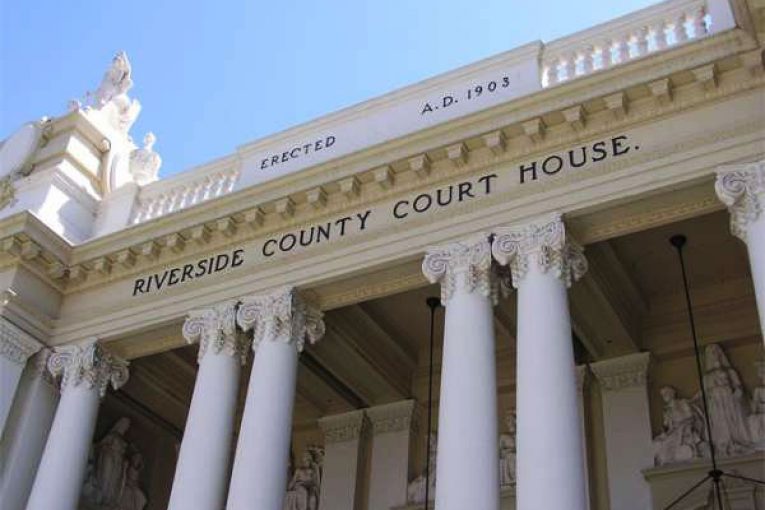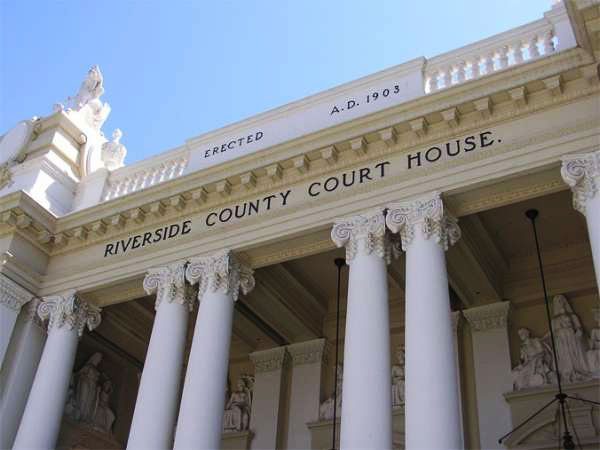

By Jacob McCollum and Stephanie Boulos
RIVERSIDE– Riverside County Judge Dean Benjamini denied Public Defender Gregory Johnson’s request to “bifurcate” consideration of any gang enhancement charges until after a jury decides if the defendant committed the crimes alleged against him.
“This is severely going to prejudice my client in terms of the substantive counts” said Johnson, in his note before the jury arrived.
During pretrial motions prior to the jury hearing any testimony, Johnson requested that the first witness testimony on the defendant’s alleged ties to a gang community be delayed until after the jury had returned a conviction on an initial charge of mayhem.
District Attorney Steven Sorensen stated that the testimony was foundational to the cause of the alleged crime, which he implied was gang motivated. 
Despite agreeing that there was the possibility of jury confusion and that there is evidence that suggests the defendant may be innocent, Judge Benjamini ultimately decided that the testimony was pertinent to the primary charge.
The defendant, Daniel Ariza Soto, is charged with evading police officers, unlawfully concealing firearms, unlawful possession of a firearm, robbery, and carjacking.
The People further allege that the defendant did this for the benefit of a well known gang operating out of Indio, CA, in Riverside county.
Under the Gang Sentencing Enhancement in California Penal Code section 186.22(b), those convicted of a criminal offense can face a significantly greater sentence when the People can prove that the defendant committed the crime for the benefit of a criminal street gang—or even that the defendant intended to assist, further, or promote criminal conduct by gang members.
The CA penal code describes a criminal street gang as “any ongoing group of three or more people that has a common name or identifying sign or symbol, is involved in committing crimes as one of its primary activities and whose members have engaged in a pattern of criminal gang activity.”
Johnson argued that even lawyers will often struggle with the finer points of distinctions between a primary charge and a gang enhancement.
He suggested that, in the interest of a fair trial for his client and to avoid confusion by the jury, the court wait to introduce any evidence of Soto’s alleged gang involvement until after the jury reached a verdict on the primary charge.
“I am asking the court to consider bifurcating all of this gang information and simply instructing the jury, that before you even get to that section we want you to first decide if this man even committed the crime…otherwise we are going to get an avalanche of gang information heading toward him, and I think that is going to filter over into the mayhem charge and that is going to make it easier for them to convict him” Johnson stated.
He then drew the court’s attention to numerous lines of circumstantial evidence that indicated that the defendant may not have even committed the primary offense.
“I think the jury should first return if he was even the man who struck [the the victim]. There is circumstantial evidence that he wasn’t. Given his demeanor when he was arrested, the demeanor of the suspect, the lack of injuries on his hand…if you think about it, if you’re hitting someone so hard that you’re splitting their lip you’d expect marks, scraps, bumps and bruises and there is nothing here.”
Johnson again emphasized that, while the gang enhancement may ultimately come into play, the court should wait until a jury convicts him.
“I want the man to get a fair trial and I just think if we introduce the gang stuff too soon, and I am not saying we don’t introduce it, just wait and see if they convict him, and then see if they want to apply the enhancement,” he concluded.
Sorensen resisted the idea that the gang elements to be introduced by his witness could be so neatly separated from the primary charge.
“The connection to gang information and this crime is very strong. This was done over a ‘hit up’…there was the word ‘SnG’ said as it occurred, it occurred in known SnG gang territory, and it had circumstantial evidence connecting it to a member of SnG. So you can’t divorce the two ideas. The gang and the crime should be heard by the jury because the circumstantial evidence of intent and why it was done and that it was done by gang members goes to the heart of the matter” he argued.
The judge ruled that testimony regarding gang affiliation would be heard by the jury.
 Jacob is a Political Science-Public Service major in his final year at UC Davis. He is originally from Texas, but hopes you don’t hold that against him.
Jacob is a Political Science-Public Service major in his final year at UC Davis. He is originally from Texas, but hopes you don’t hold that against him.
 I’m a second year Political Science and Philosophy major at UC Davis from SoCal, hoping to pursue a career in law!
I’m a second year Political Science and Philosophy major at UC Davis from SoCal, hoping to pursue a career in law!
To sign up for our new newsletter – Everyday Injustice – https://tinyurl.com/yyultcf9
Support our work – to become a sustaining at $5 – $10- $25 per month hit the link:




